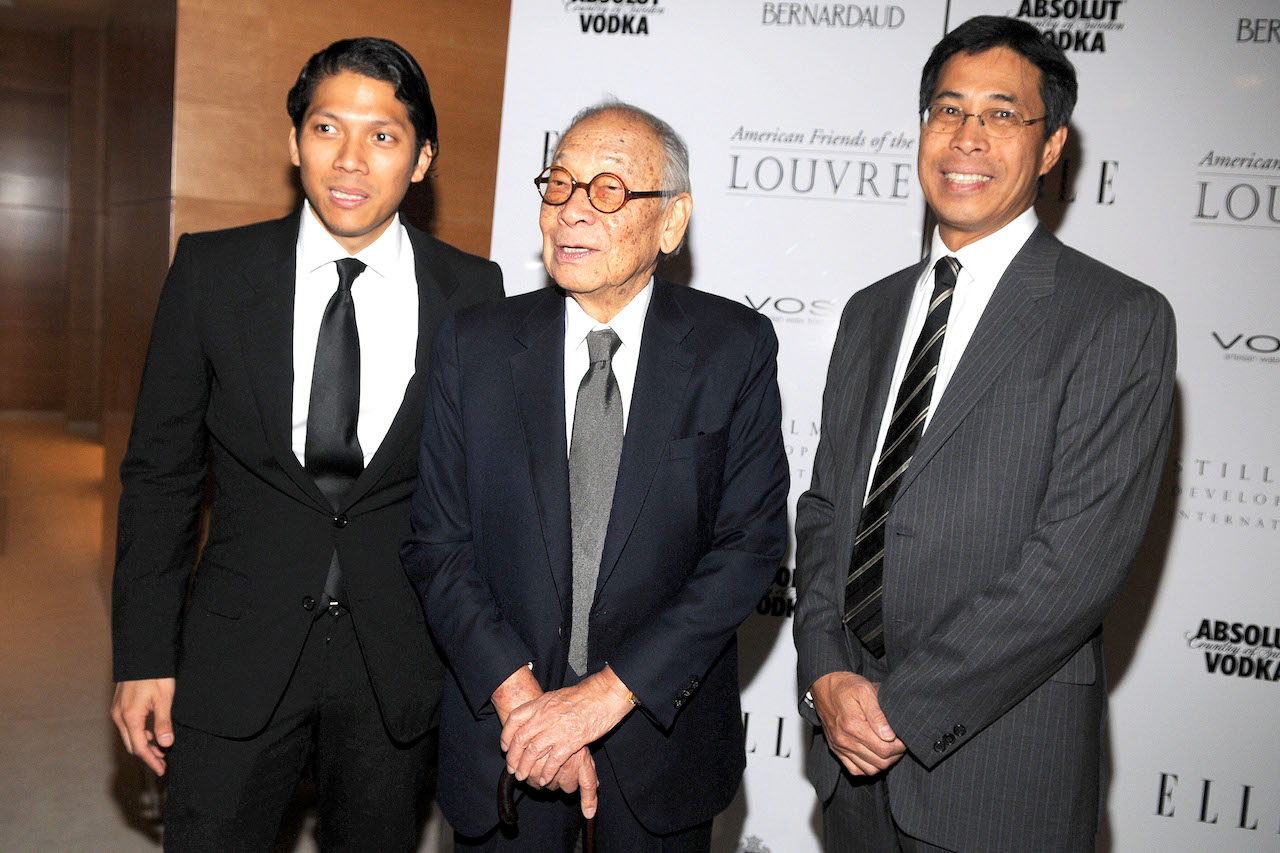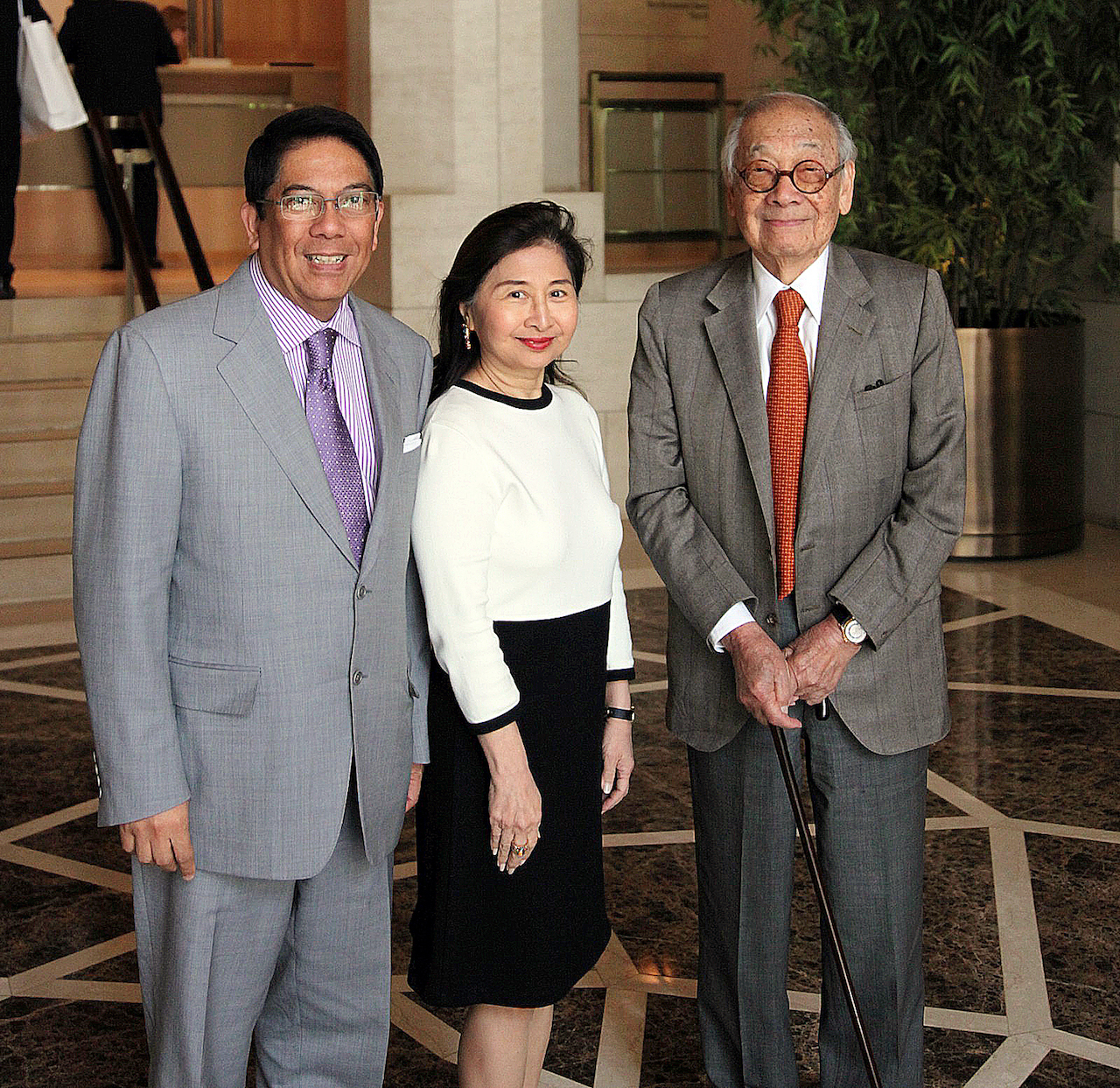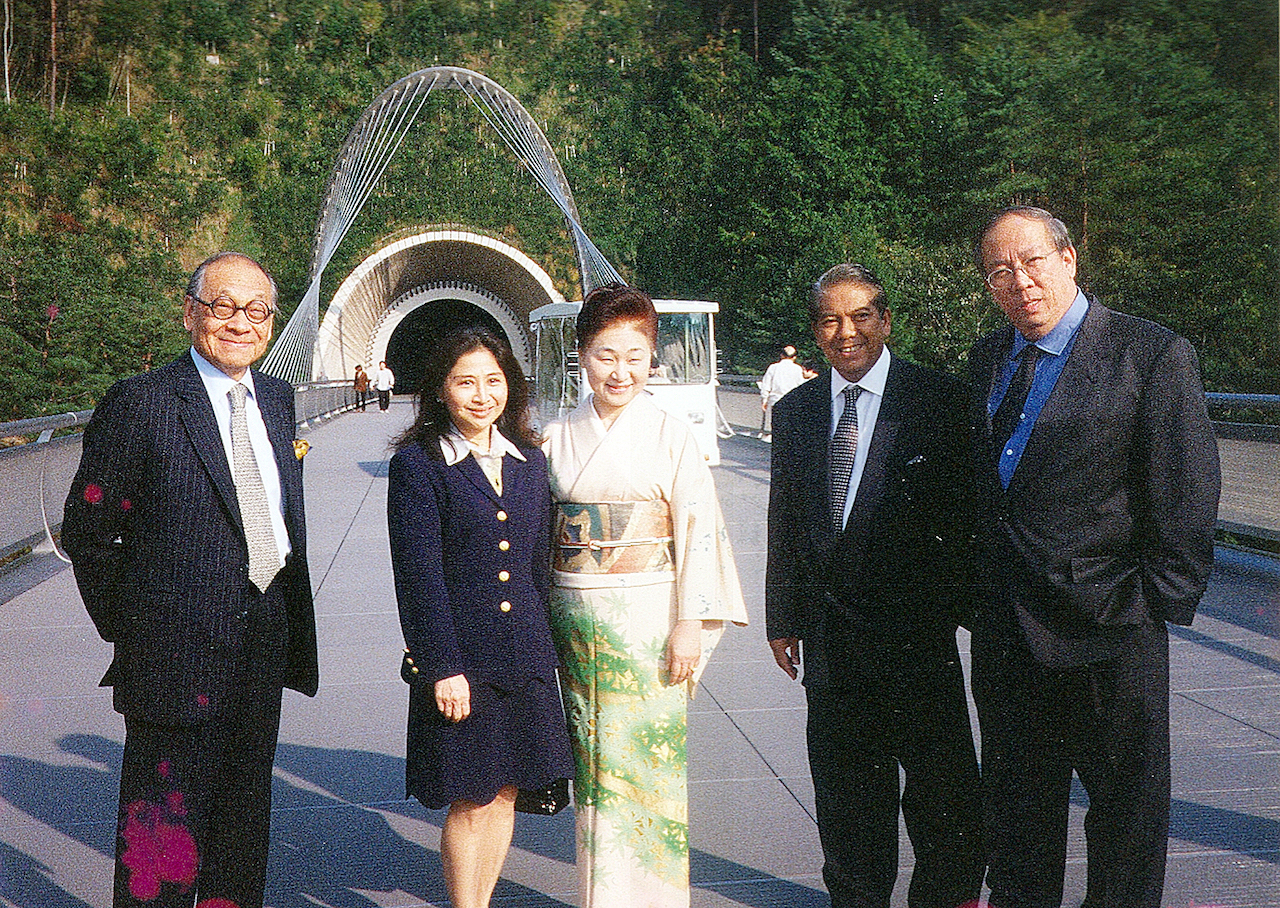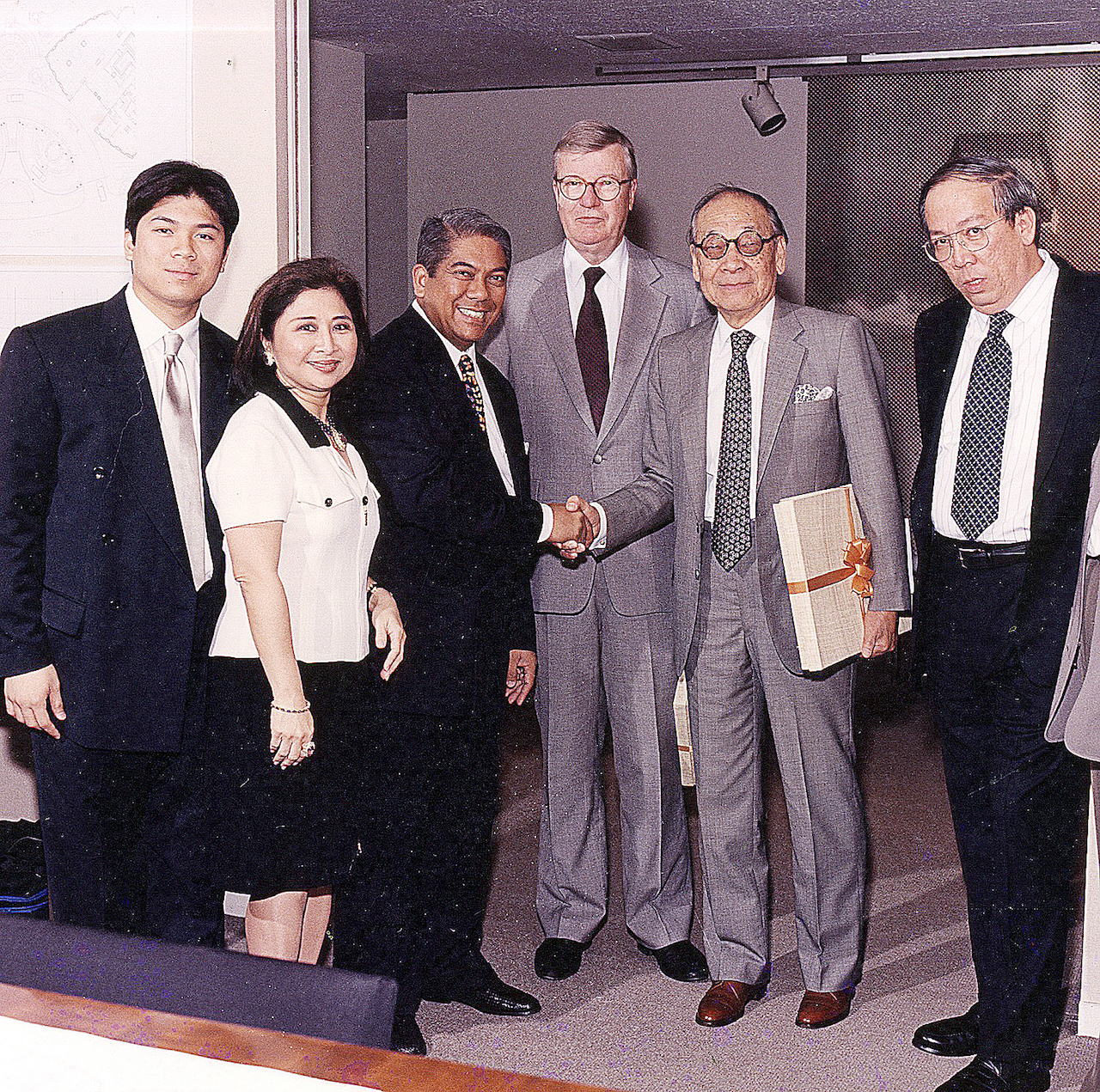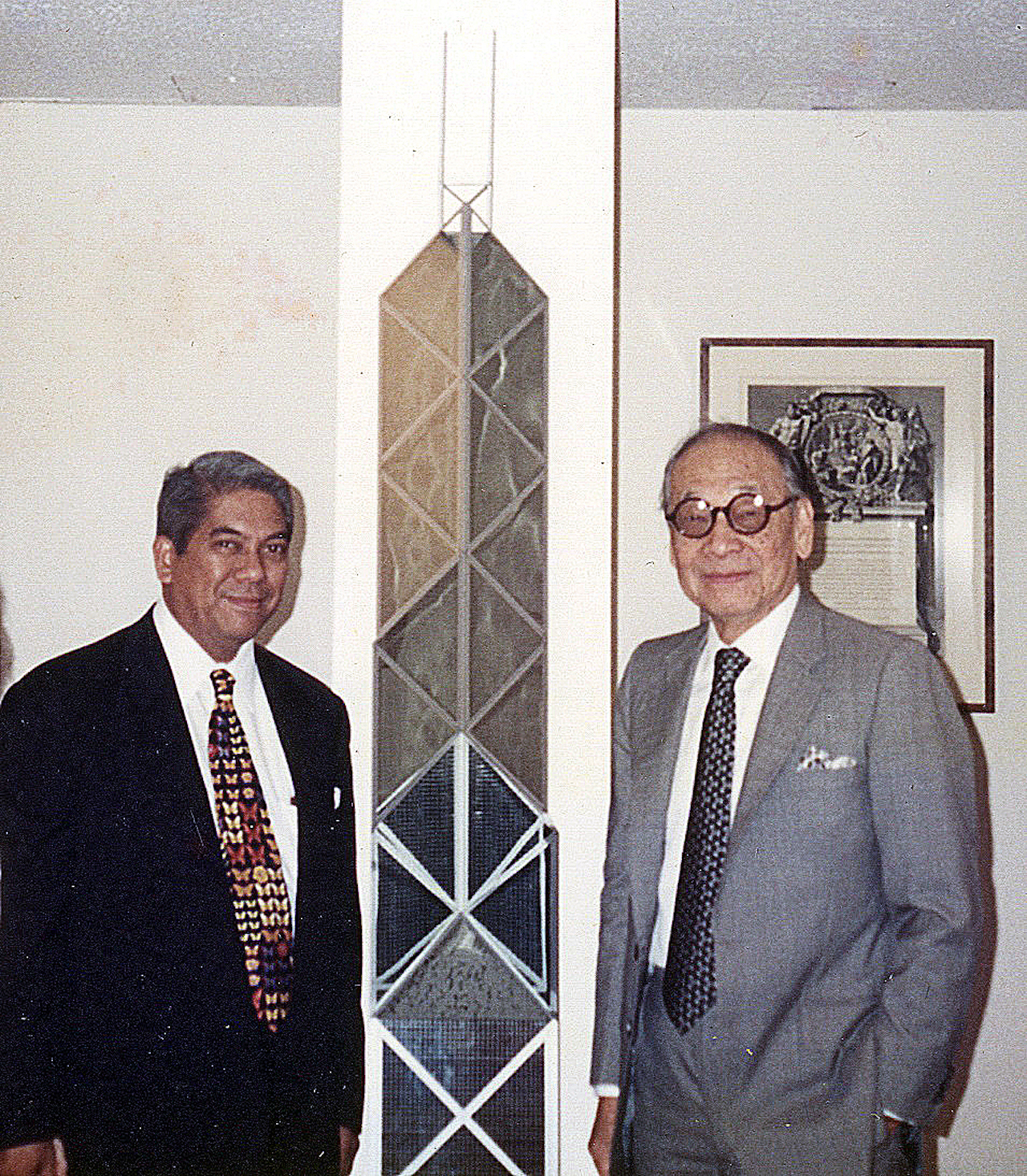(Ambassador Antonio is the chairman and CEO of Century Properties Group, and is Special Envoy of the President to the United States. Through his firm, he has worked with international names including I.M. Pei, Versace Home and the Trump Organization to create properties in the Philippines.)
The revered and multi-awarded I.M. Pei passed away last week at a ripe age of 102 and left the world with several iconic public landmarks — among them the central entrance of the Louvre Museum in Paris, the East Building of the National Gallery of Art in Washington, DC, and closer to home, the Bank of China tower in Hong Kong.
The Pritzker Prize for Architecture describes Pei’s work as “characterized by its faith in modernism, humanized by its subtlety, lyricism, and beauty.”

Pei designed award-winning buildings and the most controversial is perhaps the Louvre Pyramid in Paris, France. “The need to modernize and expand the Louvre, while respecting its history and architecture, led to the centrally located glass pyramid which forms the new main entrance and provides direct access to galleries in each of the museum’s three wings. The pyramid also serves as a skylight for a very large expansion building constructed under the courtyard, which provides all public amenities and technical support for the museum,” according to his Pritzker bio.
Architect Norman Foster, who designed the glass dome on Berlin’s Reichstag, told the New York Times, “In the days we drew by hand, we used sharp number 4A pencils. If you look at the range of I.M. Pei’s work, the link is the recurring geometry, which produces a kind of triangulated edge. That edge is in the Louvre Pyramid and the National Gallery. I see 4A sharpness, a kind of razor-sharp clarity.”
Of his works, my personal favorite is, of course, the Essensa East Forbes in Bonifacio Global City, one of the few residential buildings that I.M. Pei worked on in his lifetime.
Conceived in the 1990s when Century Properties was still a new player in the real estate industry, Essensa achieved for us many firsts. It was a make-or-break project — our first ultra-luxurious condominium project, envisioned to be one of Asia’s best. We pulled out all the stops to make it a standout, from materials to the latest technology available, to produce a crown jewel for the Philippines.
Essensa was the first tower to ever receive government permits, break ground, and rise in what was still a deserted Fort Bonifacio at that time. People thought we were foolish to build something in an untested location. To make matters worse, the Asian Financial Crisis of 1998 struck not long after we started construction. Armed only with faith and confidence that the architecture and the quality will bring us to the finish line, we persevered and completed Essensa in the year 2000.


Essensa’s master architect, no less than the I.M. Pei, inspired and motivated us all throughout the process. Because it was an ambitious project for us, we wanted it to symbolize the essence of perfection. I.M. Pei’s architecture did not disappoint, with Essensa’s towers shaped like two butterflies soaring in flawless harmony.
The choice of an architect was a long process. We shortlisted five Pritzker Prize-winning architects and went to see all of them. As an avid watcher of the development scene worldwide, I was already awed by the works of I.M. Pei even before we met.
Out first meeting in the offices of his then architecture firm Pei Cobb Freed and Partners along Madison Avenue in New York was an unforgettable experience. It was supposed to be just an initial introductory meeting but lasted to more than an hour of sharing stories, banter, and history. I.M. Pei was already in his seventies and had reaped all the accolades in his field including the Nobel Prize in architecture, the Pritzker Prize. He told me that he did not want to do residential projects anymore; just museums. But for us, he made an exception.
This started the friendship between my family and his, including his wife Eileen and his sons. He would take us to his favorite Chinese restaurant in Manhattan called Canton, where he knew all the waiters by their first names and would order the house special for us. One evening, we had the opportunity to dine at the Four Seasons Hotel in New York, which was one of his notable works. We spent a light and happy evening, with Eileen and Hilda hitting it off very well.
While his firm started designing Essensa, I.M. Pei always invited us to personally see some of his international works: The Louvre in Paris, the Museum of Islamic Art in Doha, the Miho Museum in Kyoto, Japan. An architectural genius, he knew exactly the how a building can make a mark in the local skyline. Like what they did to Essensa, they designed to create an impact, a landmark, a destination.
Much later, we would work again in another luxury condominium project, The Centurion in the Fifth Avenue District in New York, through Antonio Development, which was completed in 2008. His son Sandi Pei headed the project through Pei Partnership Architects. I.M. Pei was turning 90 and was acting more as an adviser to the firm, and yet his masterful touch is evident in the building’s beautiful and elegant design.
My last encounter with him was two years ago in New York, at the United Nations Headquarters where Asia Society threw him a fitting tribute on his centennial birth year. He was his usual gracious self that I never realized it could be the last time I would see him.
I.M. Pei was a genius and a fine gentleman. Knowing him and working with him was a journey that our family and company will always cherish. To me, he was bigger than life. While he was born in China and a citizen of the US, he was a true citizen of the world.

